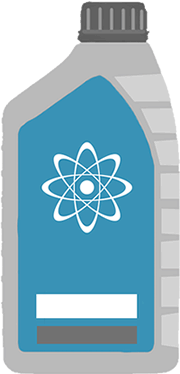THE TECHNOLOGY
Thermonomics patented technology works inside the A/C and refrigeration units.
Refrigerant enters the compressor, and comes out at a high pressure and temperature.
Then, refrigerant enters the condenser, where it transfers part of the heat to the air flowing through the coils.
When refrigerant passes through the expansion valve, its volume increases in a very short amount of time, dropping it's temperature.
As it travels through the evaporator, refrigerant absorbs the heat of the air flowing through the coils, cooling it. After this, refrigerant enters the compressor, to start the cycle again.
In addition to refrigerant, A/C units need oil to work. Oil is there to lubricate the compressor but, in practice, it mixes with the refrigerant and travels through the coils, where it starts to accumulate, decreasing efficiency drastically. Oil inhibits flow and causes heat transfer to be inefficient, which causes air not to be cooled to its maximum capacity.
Every year up to 8% of the systems efficiency is lost according to ASHRAE (American Society of Heating, Refrigerating, and Air-Conditioning Engineers).
Thermonomics starts working by bonding itself to all metal surfaces in the system, displacing the built up oil.
The polarized molecules create a one molecule thick layer that prevents oil from building-up again, and it's thermoconductive properties increase heat transfer.
Thermonomics restores efficiency to used equipment, and prevents efficiency loss in new equipment.
HIGH TECH PRODUCT

The efficiency restorative and preservative technology in Thermonomics® was scientifically formulated to increase heat transfer in A/C and Refrigeration systems, condition them and enhance their performance.

Thermonomics® was awarded a US patent after 20 years of developing and testing, with no negative effects on equipment, achieving energy savings of more than 40%.

- A/C Units
- Walk-in Coolers and Freezers
- Ice Machines
- Cars and Buses
- and much more!
TECHNICAL DOCUMENTS

